This article was written in 2018. The dates and links have been updated for 2020.
It’s officially been spring for a week now, although by looking at my chapped and frozen hands, you’d never know it.
I’ve been inspecting the garden between bursts of rain, snow, and hail. Today it’s just cold outside. But in spite of these uneven winter-like conditions, signs of spring abound in the garden.
Ever-hardy tulips and daffodils have managed to push through the cold soil, their pointed leaf stalks often piercing through paper-thin fall leaves. A closer look in the perennial flower garden reveals the tiny buds of Autumn Joy Sedum emerging, along with the first glimpse of peony stems. The raised beds have come to life as well — garlic stands 6 inches tall; winter cover crops of rye and field peas have come back to life; and the covered beds of kale, spinach, and arugula are ready for harvesting.
Mother nature has her own timeline and it’s best that we don’t fool too much with it! Here are a few gardening tips for the early season:
Resist the Urge to Buy Now
Most of the “big-box” home and garden centers are filling up with plants. No matter how spectacular they look — resist the temptation to buy! Don’t be fooled in to thinking they will survive — they will not, it’s just too early to plant outside.
- Our last average day of frost is May 15th. Some years are warmer and we can plant earlier, but doing so is always a bit risky and requires implementing labor intensive frost prevention techniques.
- Warm season vegetables such as tomatoes, cucumbers, peppers, and basil all require warm soil and warm air temperatures to thrive (a minimum of 55 degrees overnight air temp). One frost will quickly kill them off. It’s best to wait until early May to purchase warm season crops, and even then, you may have to “hold” them a few more weeks before planting.
- Shop local! Purchase bedding plants and vegetable starts in late spring from from local producers or nurseries who grow plants in our region (the Kootenai County Farmers’ Market opens May 11th, 2019). Many big-box stores receive greenhouse stock from other regions of the country and are not acclimated to our growing conditions.
Start Seeds Indoors Now
A great way to get your gardening fix now (and save a little money), is to start a few of your favorite veggie or flower plants from seed. It’s easy and only requires a few basic supplies and a warm, sunny window. Seed packets are less costly than plant starts and you’ll have more choices of plant varieties with seed than you will with plant starts.
- Tomatoes, peppers, and basil are easy to grow from seed and require about 8 weeks of growth before transplanting. Seeds started in late March will be ready to transplant around the last average day of frost on May 21st.
- See our seed starting series of articles here!
What to do in the Garden Now
If you are anything like me, you are itching to get scratching in the dirt. But before you do that, I recommend you start scratching notes with a pen in a garden journal! This will help you track your garden’s progress and it will become a valuable tool year to year. I’ve been keeping a journal since 2006 and use it regularly to compare weather, planting times and locations, as well as my crop successes and failures. Here are a few more early season gardening tips to get you started.
Inspect and Make A Plan
- Inspect your garden for winter damage to structures or perennial plants and gently rake or pick up any debris.
- Plan out your 2018 garden. Decide what you are going to grow this year and most importantly, where you are going to plant it (here’s where that journal comes in!!). There are helpful gardening planning tools available online.
- When it comes time to plant, rotate crops around your garden. Don’t grow the same type of plant in the same place year after year. Rotating helps prevent the depletion of soil nutrients and prevents disease. Tomatoes should be grown in a different location each year.
The Dirt on Your Soil
- Don’t work wet soil, it will only compact the soil and create rock hard mud balls! Once the ground dries, use a spade or garden fork to gently turn the top layer of soil. There is no need to do a “deep” rototilling — doing this just brings weed seeds to the surface (where they will quickly germinate) and can damage the soil’s integrity, not to mention destroy all those good micro-organisms and worms living there!
- Go easy on soil amendments – the best course of action is to have your soil tested before adding any amendments. A soil test will tell you what your soil needs or doesn’t need – it’s much better to be informed than to guess. And yes, you can add too much organic compost! You can find soil testing kits at the Kootenai County UI Extension office.
Weed It Out
- Now is a great time to get a jump on weeds. The best option is to pull weeds – the soil is wet, roots come out easier and you get rid of weeds before seeds set.
- If you choose to use a chemical (organic or synthetic) for weed control, please read and follow the instructions. Some pesticides will kill everything and some are very specific. Know what your are trying to remove and then read and follow all instructions. Just because it is an organic substance does not mean it’s not harmful! I can’t stress this enough.
- And one word about using vinegar to kill weeds – don’t!!! No matter what your read on the Internet, vinegar should never be used to kill weeds. Vinegar is an acid. It certainly will wilt the leaves of weeds, especially on a hot day, but it will not kill the roots – and what’s worse, it can change the pH of your soil and KILL all the good micro-organisms that live in your soil. Don’t Use Vinegar. Period.
Plant Cool Crops
-
Plant cool season crops in late April/early May. Crops such as peas, spinach, kale, lettuce, and carrots can usually be sown directly in the garden by the end of April. Of course this depends on the weather. If it’s really wet and cold, seed will often rot before germinating. Check the forecast!
Enjoy gardening!
You don’t need a large space to garden – there are lots of options today and many plants are well suited to container growing. You can start small with a window box full of herbs, or have several containers on a sunny patio with a variety of vegetables, herbs, and flowers. A word about containers – they do dry out quicker than in-ground or raised garden beds, so you’ll need to pay more attention to watering – but there isn’t much that can’t be grown in the proper size container! My final tip is simple: experiment and have fun!
There are no mistakes in gardening, only experiments.
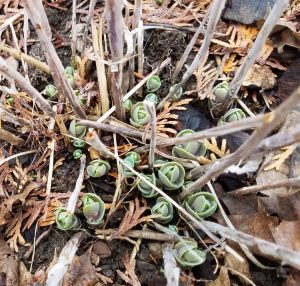
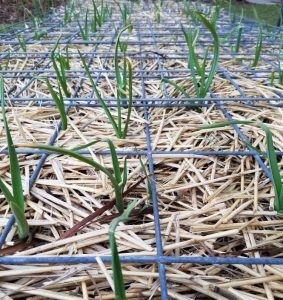
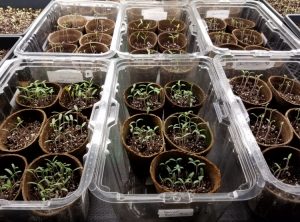
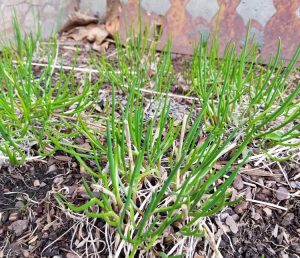
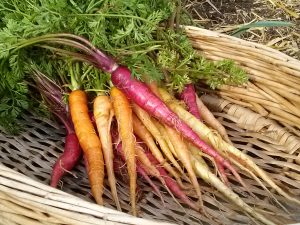
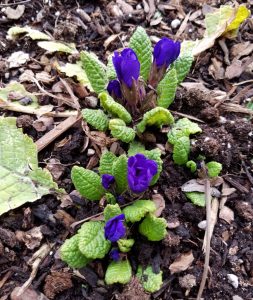


[…] Credit: Garden.org, Almanac.com, Coeur d’Alene Coop […]